How to Use a Product Backlog Template to Ensure Success
A messy or complicated product backlog is tough to prioritize, nearly impossible to track, and slows down your team like sneakers in muck. To make matters worse, your product vision can get lost, rendering your roadmap almost useless.
Trying to manage things like this isn’t just a massive waste of time (because there are so many good templates to use) but also very costly. As a product manager, you need a backlog that simplifies your work rather than one that adds to the chaos.
A well-crafted (digital) product backlog template is a direct route out of this mess. With a good template, you can get up and running in no time, and it’ll pay off the initial investment just as fast 🤑.
In this article, you’ll discover what the best product backlog templates look like and how to build a backlog template of your own. Better yet, you’ll learn how to do this effectively and (nearly) effortlessly using Fibery.
What is a product backlog?
A product backlog is a prioritized list of work items like features, changes, and bug fixes that need to be delivered for a successful product.
Your product backlog should be based on the product roadmap and the product requirements. A product roadmap serves as a blueprint for a product’s vision, direction, priorities, and development throughout its life cycle.
You can create the most ambitious product roadmaps with high-end themes and concepts, but they won’t come to life without a prioritized product backlog.
Backlogs carry a heavy load for any product development team. Here’s a quick look at what an Agile battle scenario looks like:
- Agile sprints are short, focused development cycles lasting 2–4 weeks. During sprints, the team works on completing user stories and other items by breaking them up into smaller tasks.
- The product backlog is the sprint’s source of work — it feeds prioritized work items into a sprint backlog (a backlog made for each sprint).
- The product owner explains the prioritized work items during backlog grooming, also called backlog refinement.
- The development team then breaks the work items into tasks during sprint planning. After the sprint, the work item is either finished (moves on) or, if changes are required, it moves back to the backlog.
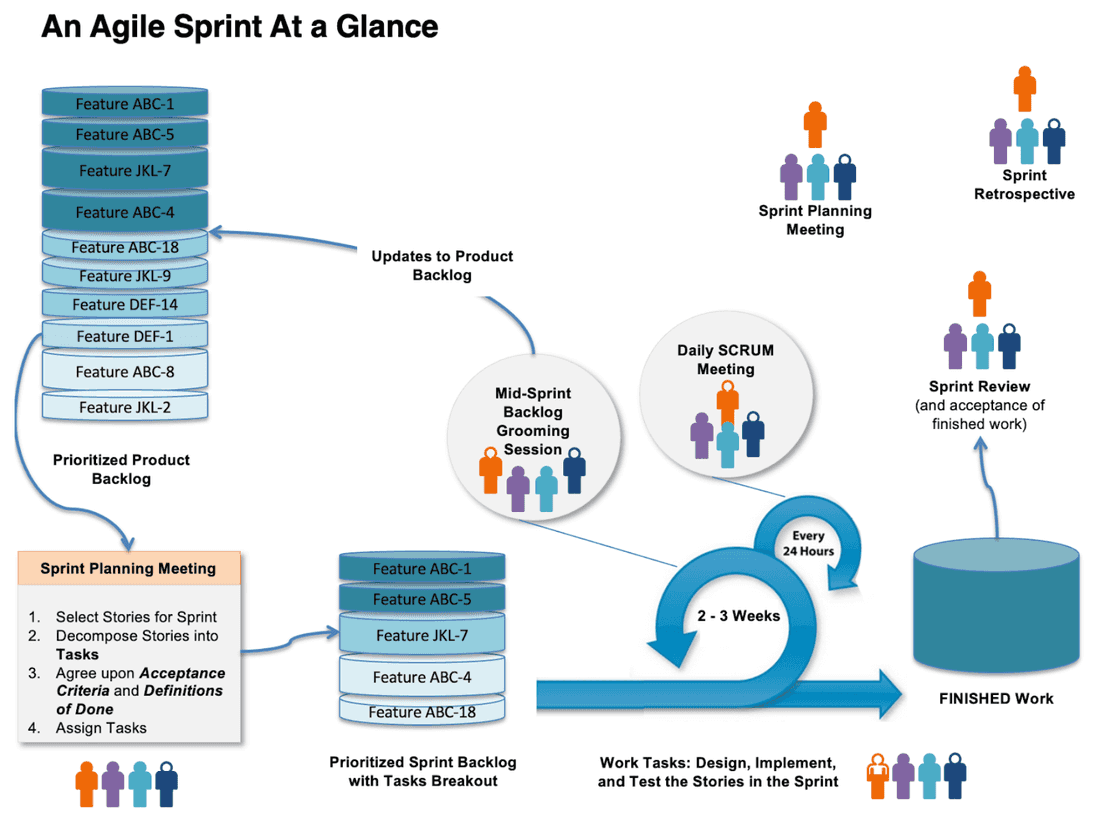
The Agile attack process makes it possible to deliver your product by taking the most important work items from the product backlog, developing them, and then batching the finished results into deliverable increments. The product backlog is super important for this to work because it is the “single source of truth” to make the product real.
But…it’s very time-consuming to create one from scratch. Thankfully, product backlog templates can save the day 😉.
What should a product backlog template look like?
A product backlog template allows you to effortlessly create Agile product backlogs for new products without reinventing the wheel. It’s an easy process where you simply fill in the template with your product’s key details (saving tons of time).
Using a product backlog template also provides consistency across teams so everyone will have a uniform way of viewing information regardless of who’s working on what functionalities.
Some templates come with features like different views, saving you even more time when managing them.
Product backlog templates take many shapes and forms, depending on the source. In most cases, you’ll find the following items:
- Epics
- Features
- User stories
- Change requests
- Defects and bugs
- Technical debt (quality is sacrificed in the interest of speed to delivery but needs improvement later, or needs an infrastructure improvement)
- Tech spikes or research items.
Fibery has done something crucial for backlog templates (and other templates, too, like the content marketing, usability testing, fundraising, or the integromat template): removing the common but sometimes fatal disconnect between products, features, user stories, and tasks by providing hierarchical views (more on this later).
5 Examples of product backlog templates
Hundreds of templates are available online, but one common issue with them is – most of the time, you can’t customize them. When you choose one to use, your process will often have to conform to the framework within the template. For example, if it only uses Scrum, then that’s what you’ll be limited to.
Fibery is a no-code platform, meaning you can customize your template to match your process. You can use Kanban, Scrum, Scrumban, or any other method within Fibery’s product management templates and any hierarchy associated with them. The beauty of no-code, or one of its beauties, is that (almost) anyone can build anything. Even templates.
To show you, here are five examples.
Fibery’s product backlog template
You can start creating your products in no time with Fibery’s fully customizable product backlog template 😉. Using this template, you’ll find that everything is already set up with rich features and processes.
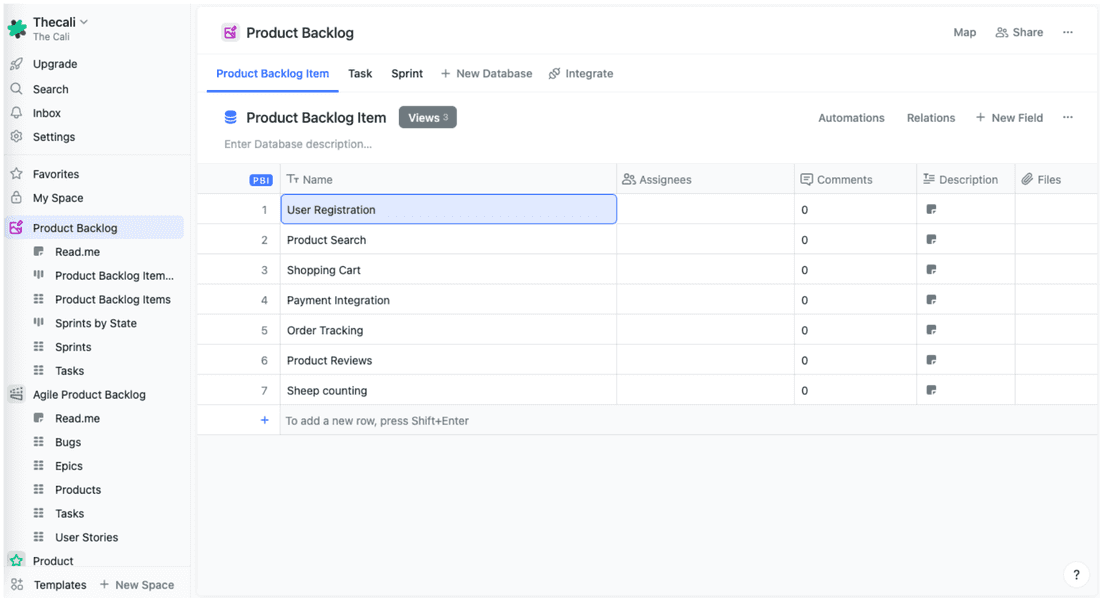
You can add new products, create your product roadmap, create epics, features, and user stories, and, of course, build and prioritize your product backlog.
Here are a few powerful features you can use in any of the backlog templates:
- Simplify the prioritization process with RICE, WSJF, MoSCoW, or build-your-own custom scoring formula.
- Organize and track product development using epics and features that each have unique views.
- Link work management and track the progress of features by drilling down in the products hierarchy. See how well outputs correspond to desired outcomes.
You might also love (or not) how the views work in Fibery.
- The hierarchical list view visualizes unlimited levels of hierarchy where you can see a product and drill down to its features, user stories, and bugs as a list.
- The board view provides tailorable Kanban columns showing progress and directly ties features to epics (if used) and the product. It’s as easy to use as Trello and good for importing key info about items from other boards or backlogs. You can also add or remove any categories easily within any of the relevant lists.
- The timeline view is useful for planning upcoming sprints or mapping the roadmap over time.
- The product view works for as many sets of products as you want. The benefits of this are that you can have your team working on different products and features within the same board. This makes it easier for them to track work being done rather than jumping back and forth between board backlogs.
- The task view provides an overview of tasks classified by hierarchical type like product, epic, or user story. If you need to customize the fields you can do that to make them fit your process.
- In the task view, you can add or remove assignees, set due dates, and provide time estimates. And, it’s a no-brainer to relocate the task cards as the template offers the option to drag and drop tasks in either Kanban or list view.
Agile product backlog template
This Agile product backlog template allows you to catalog and track all of the features that stakeholders want to include in different products. It’s an easy way to track changes, bugs, and tasks across different products and features.
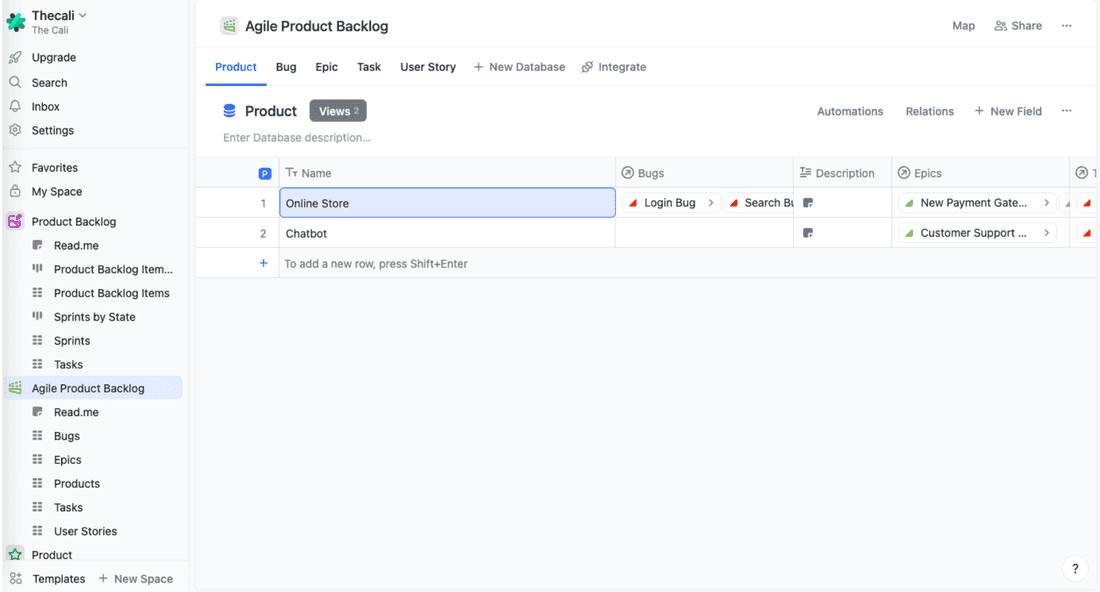
Use the drill-down menus to access bugs, epics, tasks, products, and user stories to keep information uniform and easy to track.
Key databases in this space are products, epics, user stories, tasks, and bugs.
Scrum product backlog template
Fibery’s Scrum product backlog is geared toward Agile product managers and Scrum masters working under brutal deadlines. It gives you the ability to set deadlines, construct organized backlogs, and pass on information to collaborators and coders within one workspace.
Of course, a product backlog is a product backlog, but the drill-down elements here are for the Scrum framework. So the term “Scrum” in front of “product backlog template” indicates how the team using it is going to operate. (See below for the Kanban version).
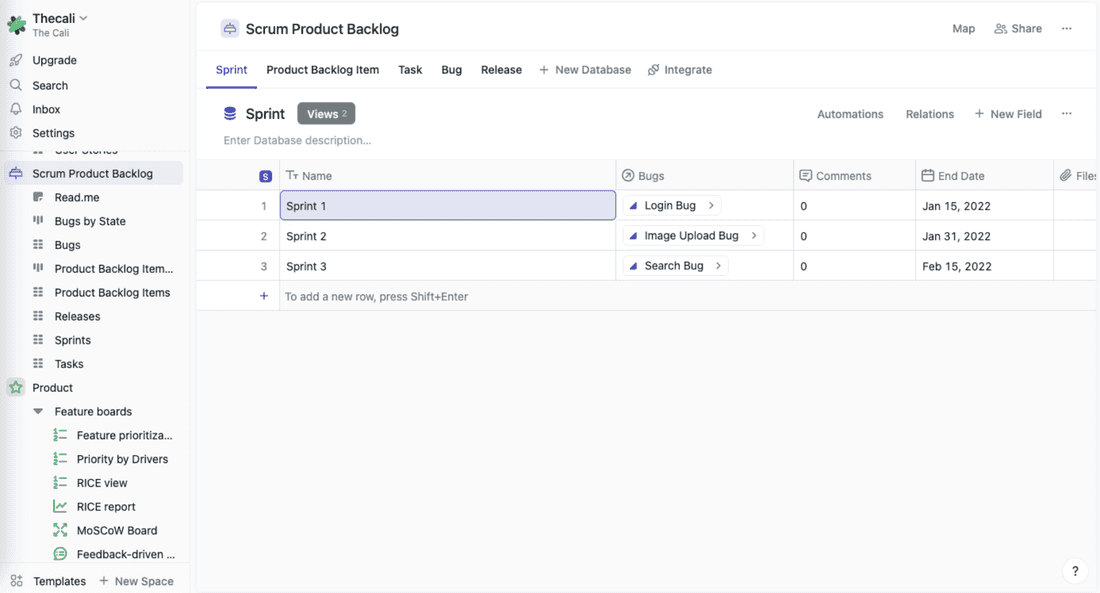
Fibery’s Scrum product backlog serves as the single source of truth for the Scrum team to prioritize, plan, and deliver increments of value.
Key databases in this space are product backlog items, sprints, releases, tasks, and bugs.
Using this product backlog template, you have the ability to:
- Use pre-made lists for sprints, bugs, releases, and tasks
- Prioritize items within any of the above-mentioned lists
- Delegate duties to various team members
- Track the progress of allocated tasks, entire sprints, and the overall product backlog
- Pinpoint issues as they arise
Kanban product backlog template
The Kanban product backlog is a space where the product team can manage and prioritize the set of features, enhancements, and bug fixes that need to be implemented in their products using Kanban boards to represent state changes for the elements.
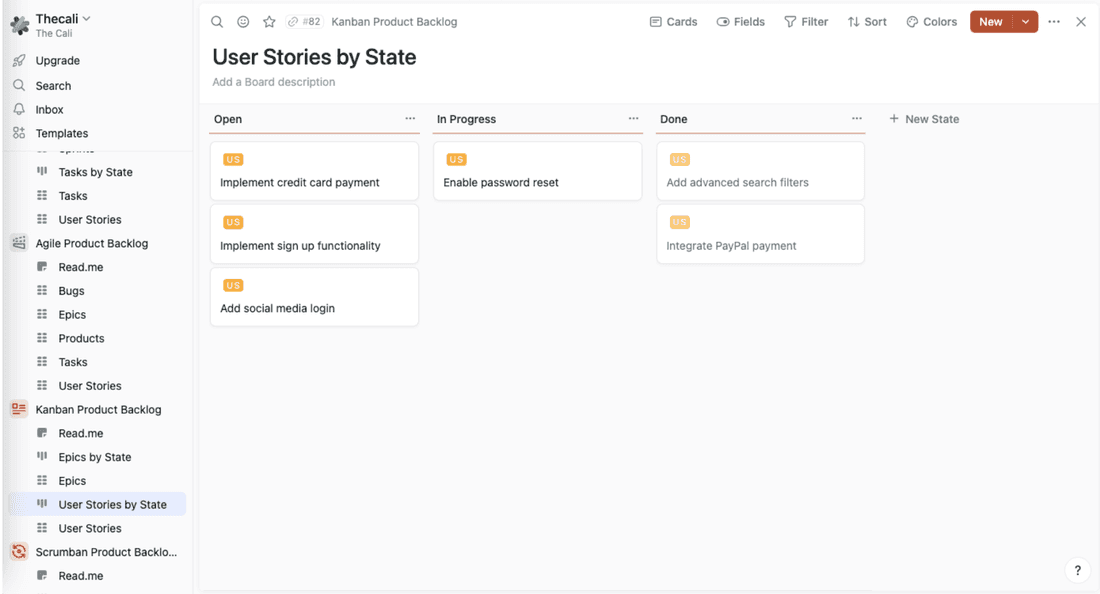
This space is good for team members to share information, collaborate, and move elements across a Kanban board from one state to another. The intuitive drag-and-drop feature allows you to quickly move processes across boards and states.
Key databases in this space are product backlogs, epics, and user stories. User stories can be associated with multiple epics, and epics can have multiple user stories.
How can I make my own product backlog template in Fibery?
In Fibery, you can create a space within minutes using a simple AI prompt like “I need a Product backlog space template”. It won’t be flawless and will likely need some adjusting, but it’ll speed up the starting process a LOT 💪.
You can, therefore, create various types of backlogs; for example, you can create any of the backlog templates in the list above or develop ones for manufacturing, marketing, or whatever you require.
Here’s how:
First, open up your workspace and click on the templates tab in the column on the left (at the bottom 😉). If you’re new to Fibery, you will be prompted to select a template or generate your backlog with AI, making it easy to get started.
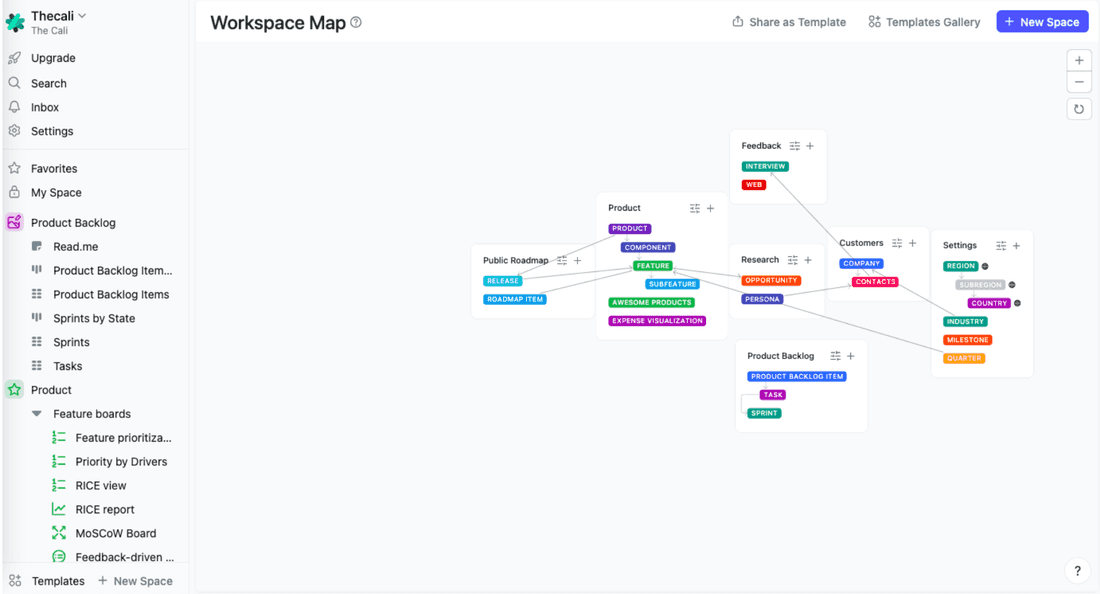
Next, click on the “generate space with AI” button. It’ll then ask you for your prompt—here, you’ll fill in with something like “Create a product backlog template” or whatever backlog template you may need.
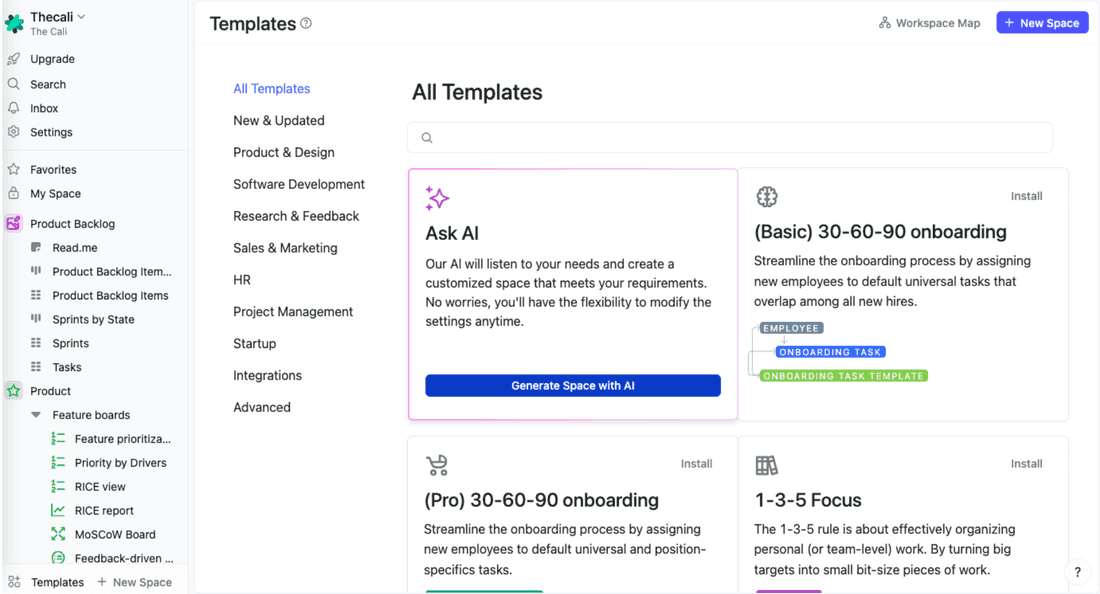
After roughly 2 minutes (speed of light), the AI will have set up your product backlog workspace, and it will lead you to the read-me section of the backlog. In this section, you will be able to customize the important information about your backlog and instructions to help guide your team when they use it.
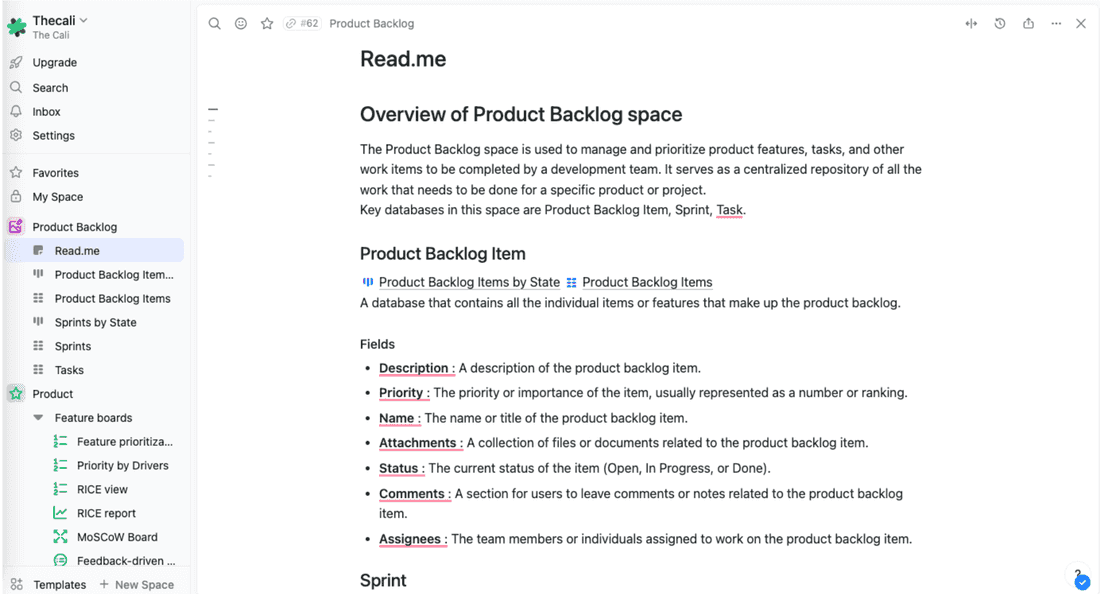
The AI will also set up the backlog with a few sample backlog items (viewable in either a list or board). You can customize these fields or add new items from the drop-down section at the top right.
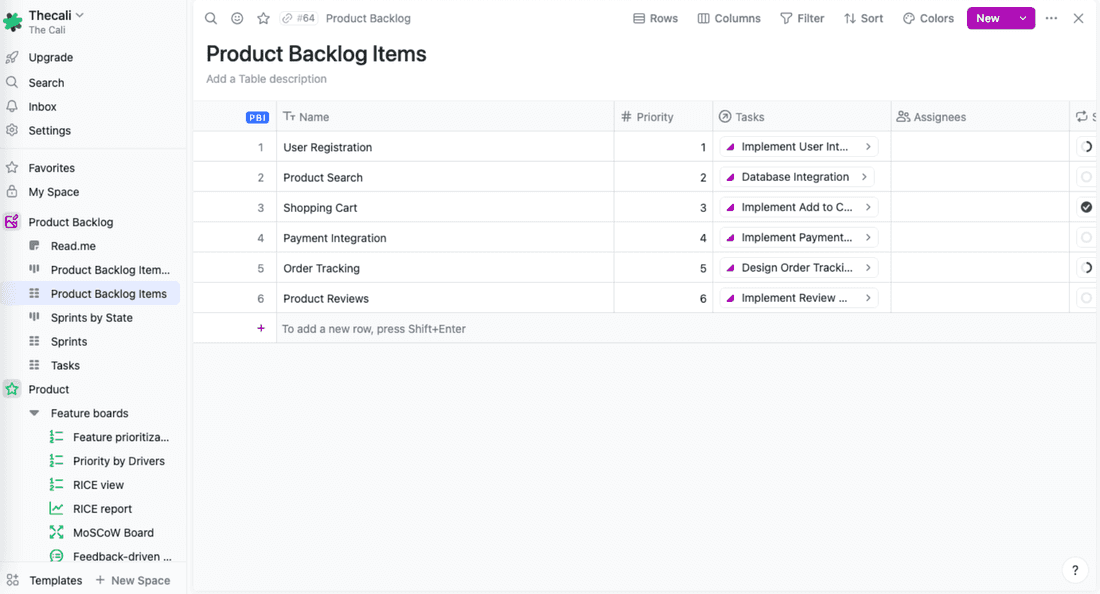
When you add a new item, you’ll be able to customize it with descriptions, tasks, files, and comments.
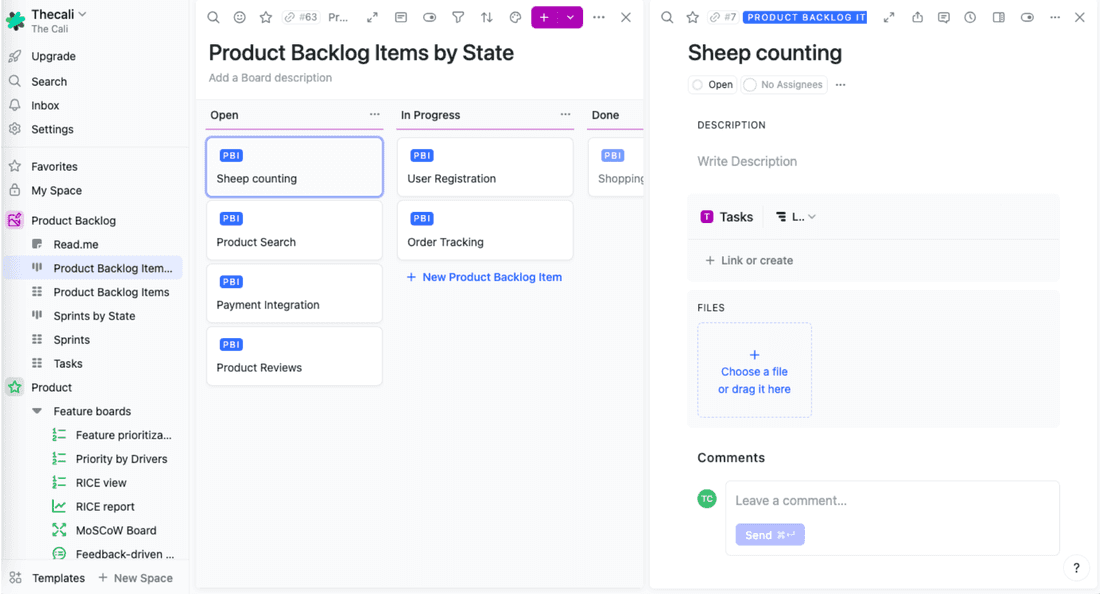
In Fibery, there are many formatting options— if you can write decent specifications, then all the other important things are there.
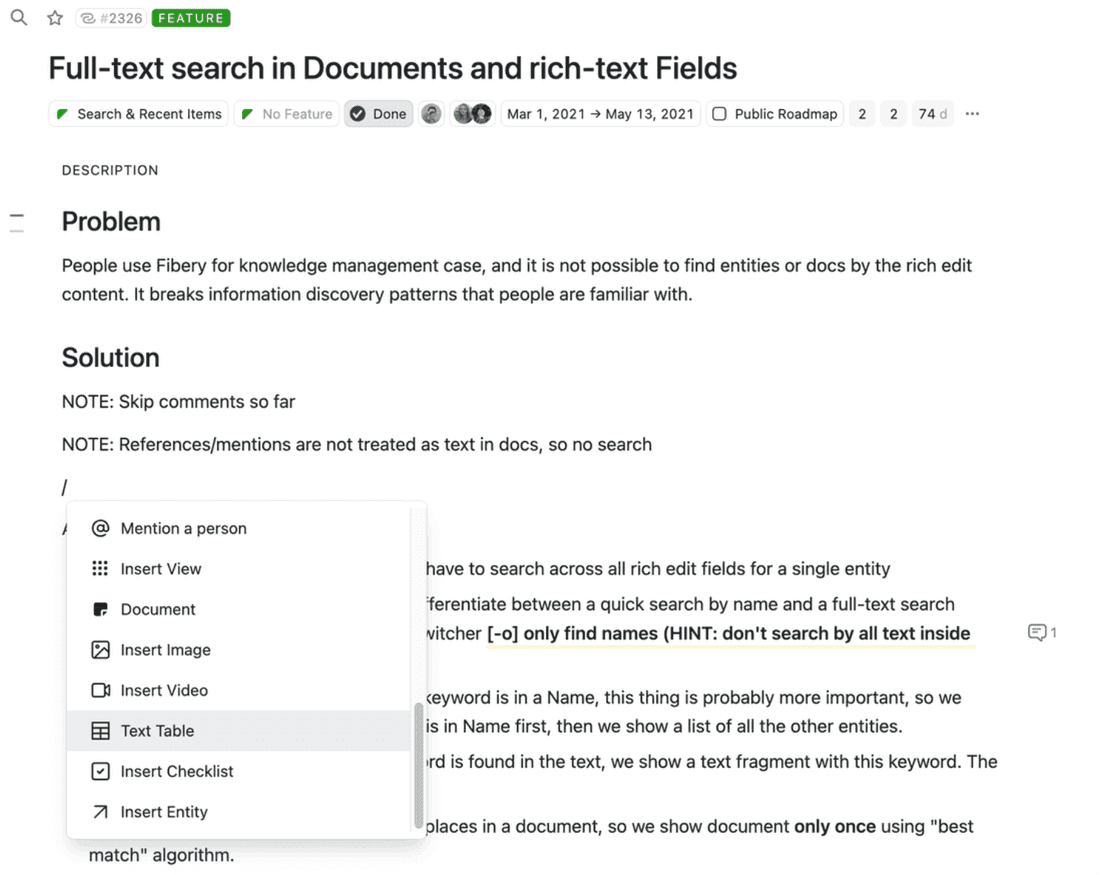
Once you’ve added your product backlog items and all the information, you’ll find the tasks for them in a separate task list tab under the product backlog workspace (easy, right?). You can add them and easily see what product backlog item each task is related to and in which sprint each one is being worked (if it has reached a sprint yet).

The PM’s hot take
Look, organizing a product backlog is not rocket science (probably that’s why our AI integration gets you quite neat results). Just make sure that, apart from you being happy with its state, your cross-functional team also understands the logic behind your backlog.
Use your backlog — don’t let it use you
If you’re a product manager seeking a hassle-free template to solve your backlog management challenges, then look no further than Fibery. It’s not just a template — it’s a complete toolbox designed with every aspect of product management in mind. In it, you can create specs, prioritize features, track progress, accumulate feedback, and even communicate releases. With its intuitive interface and powerful features, you’ll be tackling sprints to deliver your backlog in no time.
Don’t waste any more time wrestling with disorganized backlogs. Act fast, try Fibery for free, and experience it for yourself!
Psst... Wanna try Fibery? 👀
Infinitely flexible product discovery & development platform.